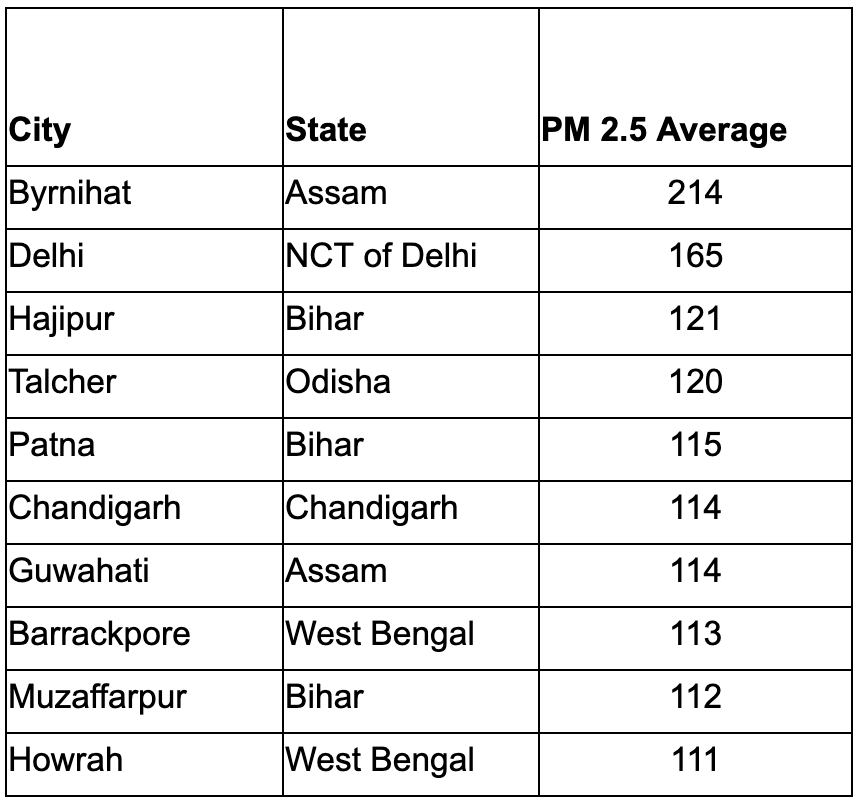Air Pollution Politics: Why Delhi's Election Ignores Its Biggest Health Crisis
Toxic air engulfed the campaign but it isn't a top issue. As parties sidestep the health crisis, a visiting US tech mogul Bryan Johnson says India has 'normalised' air pollution.
Delhi has voted for a new local government. For the last several weeks the campaign in India’s capital has been held in air pollution which, on average in January, was 33 times the WHO’s safety guidelines. Those tracking the election closely noted it didn’t become a central issue.

New data by CREA shows that the megacity averaged 165 micrograms/cubic metre of PM 2.5 in January. The health effects can be short-term, like breathing trouble, lung irritation, and coughing, and for the vulnerable, this increases the risk of heart attacks, strokes, and premature death; the long-term effects range from heart disease, lung cancer, chronic lung disease, type 2 diabetes, to adverse birth outcomes like pre-term deliveries or low birth weight.

Short-term increases in PM 2.5 alone have been linked to almost 12,000 deaths annually in Delhi. Yet, it’s hardly an issue in the elections.
Kejriwal steers clear of air pollution
Arvind Kejriwal, who is leading the incumbent ruling party AAP for re-election, has not listed cleaner air as a poll guarantee, among the 15 promises he made. The main opposition contender, the BJP has promised to reduce pollution by half over the next five years. The Congress, which ran the Delhi government for 15 years till a decade back, has also promised clean air. But the road maps of both contenders are vague - neither, for instance, tackles the menace of vehicular pollution and insufficient public transit.

So what explains the surreal absence of pollution as a key polling issue?
One report points out that 40% of Delhi’s population lives in unauthorised colonies, and that this large, and mostly poor, voter base is often promised free electricity, water and transport - more immediately deliverable benefits compared to clean air.
Yogendra Yadav, one of India’s foremost political commentators-turned-politician, attributes the lack of focus on pollution in elections to collusion between the two parties AAP and BJP, seen as the main contenders, to keep an issue outside their competition. Both parties have been in government for many years (the BJP at the national level as well as in several states) over most of the north India plains and haven’t slashed pollution levels.
However, such political commentary needs to widen its focus beyond Delhi and address the puzzle of why pollution isn’t a top election issue. Most of the world’s top 100 cities with the highest air pollution are in India and it affects voters’ health and finances. Air pollution reduction aligns with several government schemes, like the Ujjwala cooking gas programme, and climate goals.
Air pollution politics
Pollution is political, as most issues tend to be. And the poor suffer disproportionately. Missing a day’s work because of falling ill in high pollution can mean additional costs in healthcare and missing a day’s wages. What makes the inequality starker is that often the source of pollution isn’t their fault, or they don’t have access to clean energy.
A survey done in and around Delhi by the NGO, Chintan, released a year ago showed that lower-income respondents may not be aware (only 10% aware) of the air quality terms like AQI and PM 2.5 but they are acutely aware (46% reported health effects) about its health effects. It’s the opposite among higher income groups - more (71%) were familiar with technical names but fewer (21%) reported suffering because of it.
A survey ahead of the 2019 elections found respondents list water and air pollution amongst their top three priority concerns in only 42 of 534 constituencies surveyed (less than 8%.)
Incidentally, there are several Members of Parliament and other political leaders who are keen to tackle air pollution even though some of them say it’s not a vote-getter. Some of these are, admirably, bipartisan groups but they haven’t made much headway.
Will air pollution be a poll issue in Bihar?
CREA’s Manoj Kumar crunched the data for October 2024 to January 2025, typically India’s peak pollution season. The state to watch is Bihar. Last December and January, it had the highest number of cities with ‘poor’ or ‘very poor’ air quality. The state is one of India’s least developed, and it elects a new government later this year. The current chief minister Nitish Kumar has been leading the state for most of the last 20 years. But despite the high pollution, this is unlikely to be the issue that dislodges him.
Voters are then stuck in this limbo: air pollution causes suffering and death, but it’s not an election issue, and a bulk of largely poorer, more vulnerable voters may be aware of its ill effects yet political parties can practically ignore it. The question is for how long?




